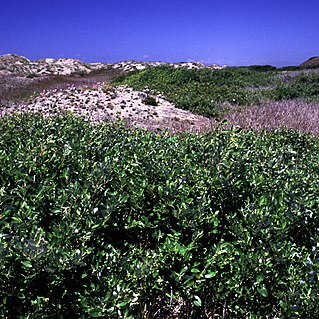Shrubs or trees, (0.6-)2-8 m, (sometimes forming clones by layering or stem fragmentation). Stems: branches (highly brittle at base), yellow-brown, gray-brown, red-brown, or violet, not or weakly glaucous, glabrous, tomentose, woolly, or sparsely villous to glabrescent (nodes hairy); branchlets gray-brown, red-brown, or yellow-brown (sometimes color obscured by hairs), glabrous, pilose, moderately densely villous, tomentose, or woolly, scale with inner membranaceous layer free, not separating from outer layer). Leaves: stipules rudimentary or absent on early ones, foliaceous (early deciduous) or rudimentary (sometimes obscured) on late ones, (2.5-7.8-18 mm), apex acuminate, acute, or rounded; petiole convex to flat, or shallowly grooved adaxially, 4-29 mm, villous, woolly, pilose, or tomentose adaxially; largest medial blade (sometimes hemiamphistomatous), narrowly to broadly elliptic, oblanceolate, or obovate to broadly obovate, 36-123 × 18-63 mm, 1.5-4.2 times as long as wide, base convex, rounded, subcordate, cordate, or cuneate, margins slightly revolute, crenate, serrate, shallowly serrulate, sinuate, or entire, apex acuminate, acute, or convex, abaxial surface glaucous, pilose, moderately densely tomentose, villous, or woolly, midrib hairy, hairs (white, sometimes also ferruginous), wavy or straight, adaxial highly or slightly glossy, glabrous, pilose, villous, or moderately densely tomentose, midrib and veins hairy (hairs white, sometimes also ferruginous); proximal blade margins entire or shallowly serrulate; juvenile blade yellowish, reddish green (sometimes obscured by hairs), pilose or sparsely to densely long-silky, tomentose, woolly, or villous abaxially, hairs white, sometimes also ferruginous, or yellowish. Catkins flowering before or as leaves emerge; staminate slender or stout, 26-73 × 10-27 mm, flowering branchlet 0-10 mm; pistillate densely flowered, slender or stout, 36-92(-140 in fruit) × 10-25 mm, flowering branchlet 0-20 mm; floral bract brown, black, or bicolor, 1.1-3.6 mm, apex convex, rounded, or acute, abaxially hairy, hairs straight or wavy. Staminate flowers: adaxial nectary oblong, ovate, or narrowly oblong, 0.5-1.4 mm; filaments distinct or slightly basally connate, glabrous or hairy on proximal 1/2 or basally; anthers yellow, cylindrical or ellipsoid, (0.5-)0.7-1 mm. Pistillate flowers: adaxial nectary narrowly oblong, oblong, or square, 0.5-1.4 mm, shorter than stipe; stipe 0.5-1.8(-2.8) mm; ovary obclavate or pyriform, glabrous, tomentose, villous, or woolly (hairs wavy), beak sometimes abruptly tapering to styles; ovules 12-20 per ovary; styles 0.6-2.3 mm; stigmas broadly to slenderly cylindrical, 0.3-0.8 mm. Capsules 5-10 mm. 2n = 114.
More
A shrub or small tree. It grows to 1 m high and spreads 1 m wide. The branches can be reddish brown. The leaves are broadly oval and 4-10 cm long. They are covered with a whitish down when young. They are smooth and dark green above and bluish green underneath. The flower catkins are on short leafy stalks.


